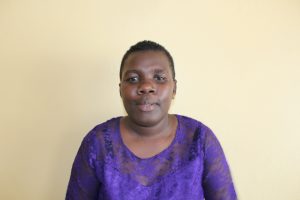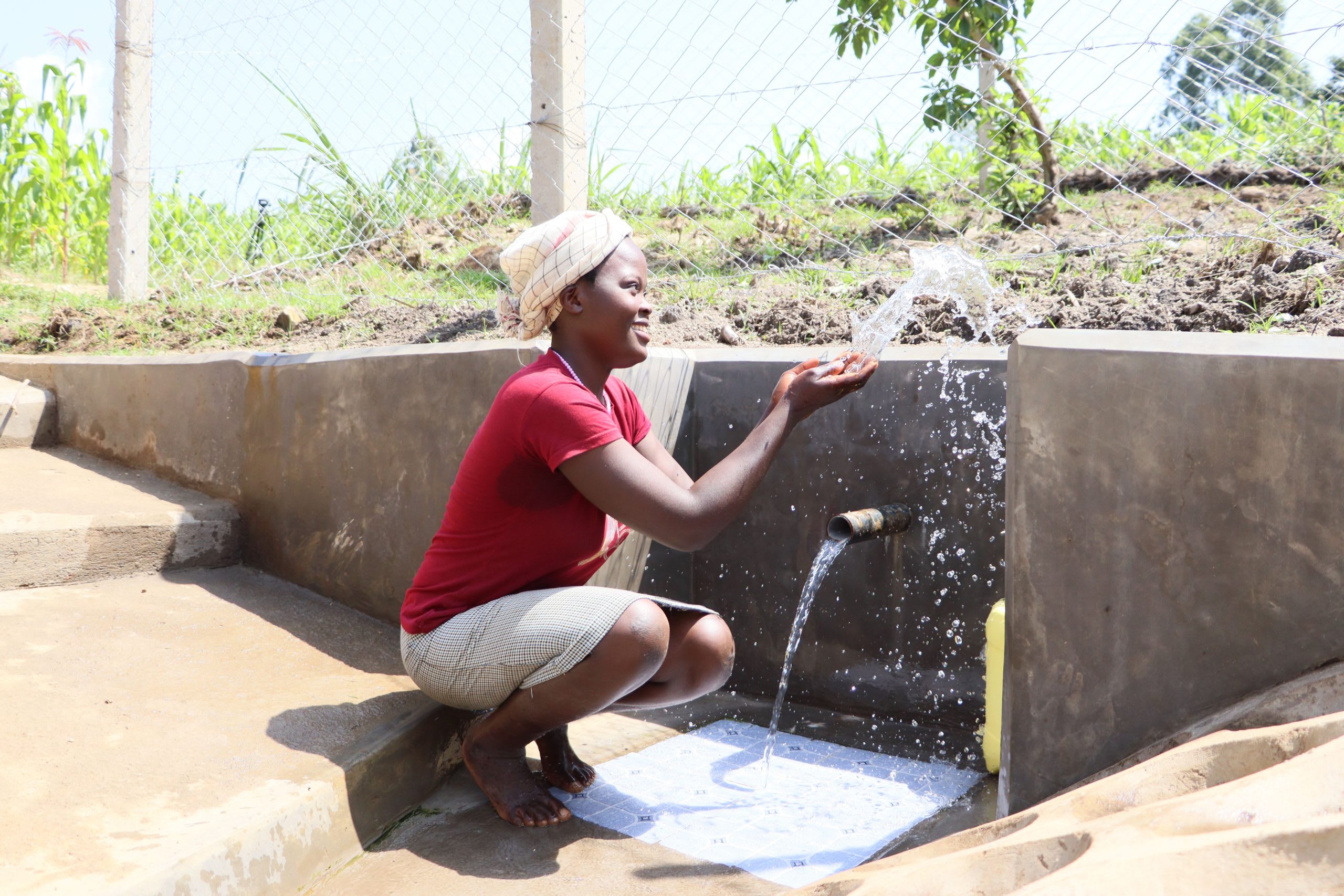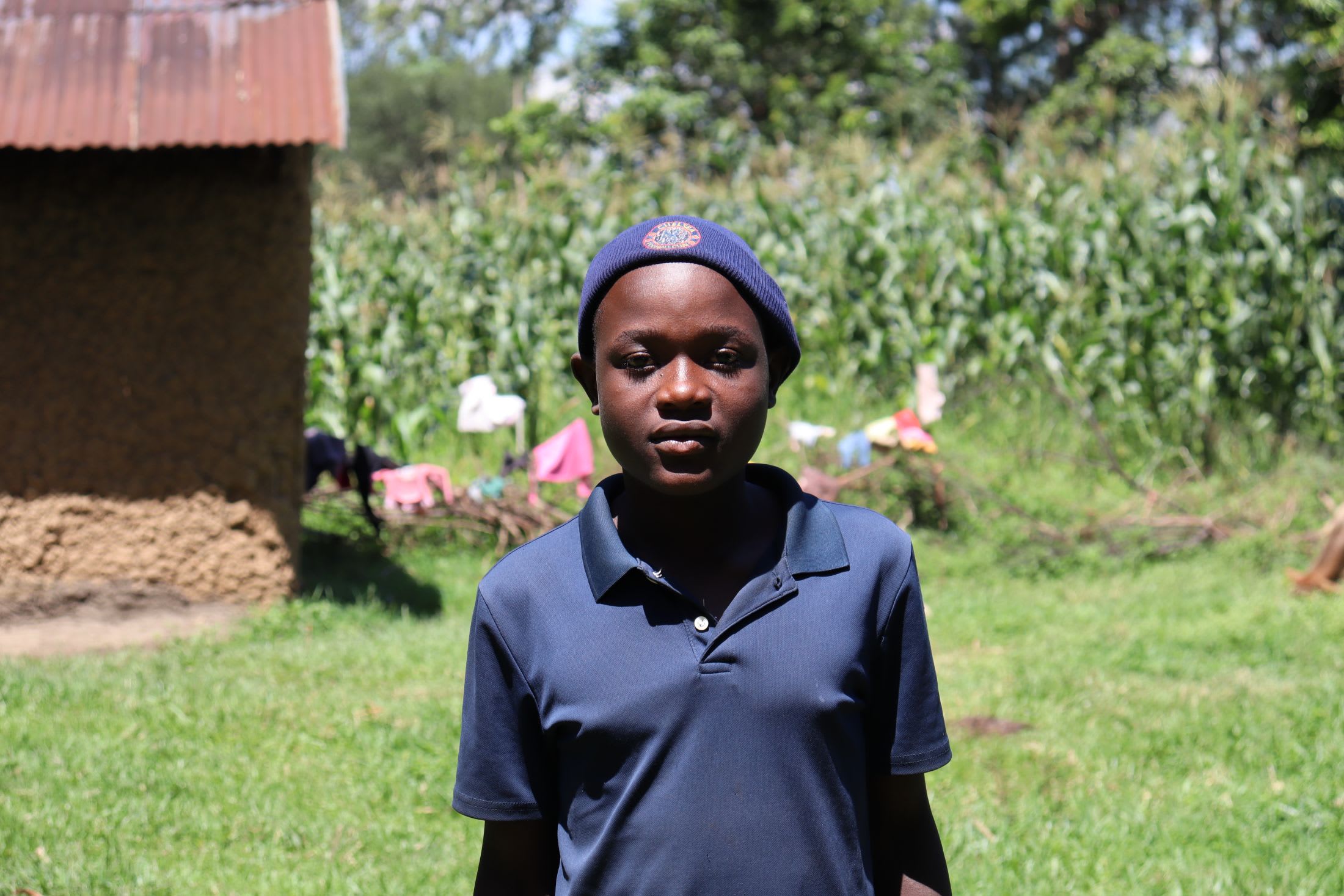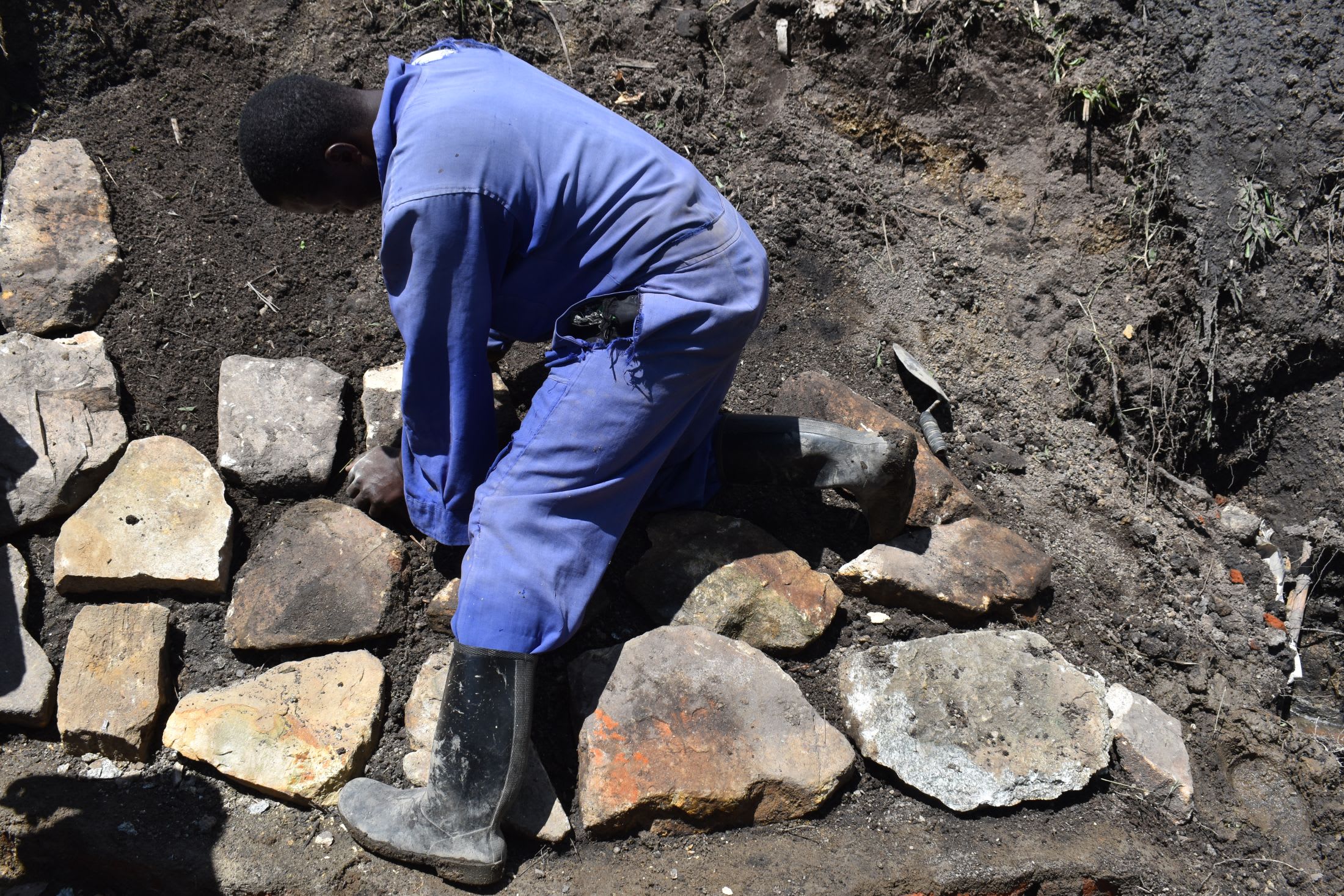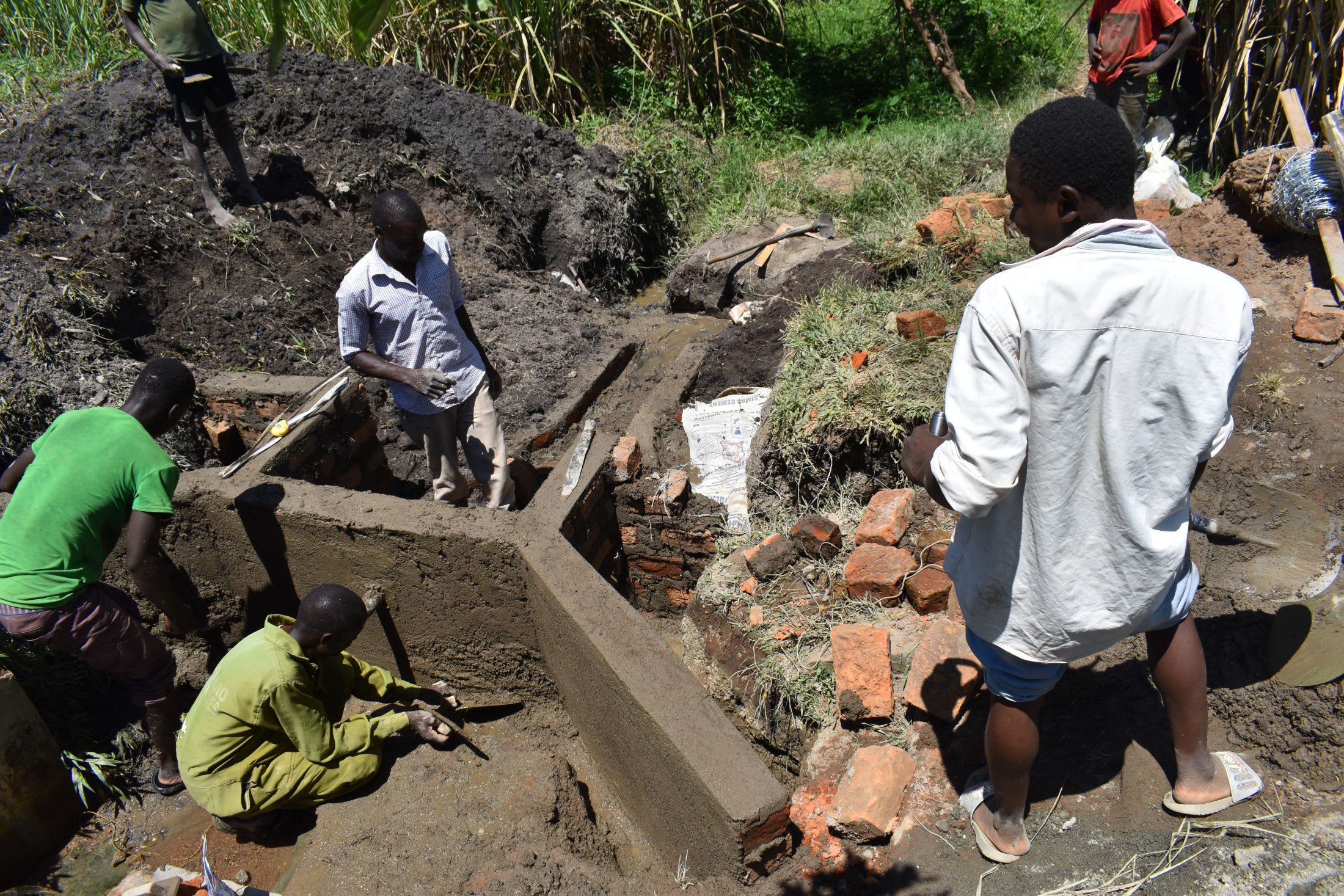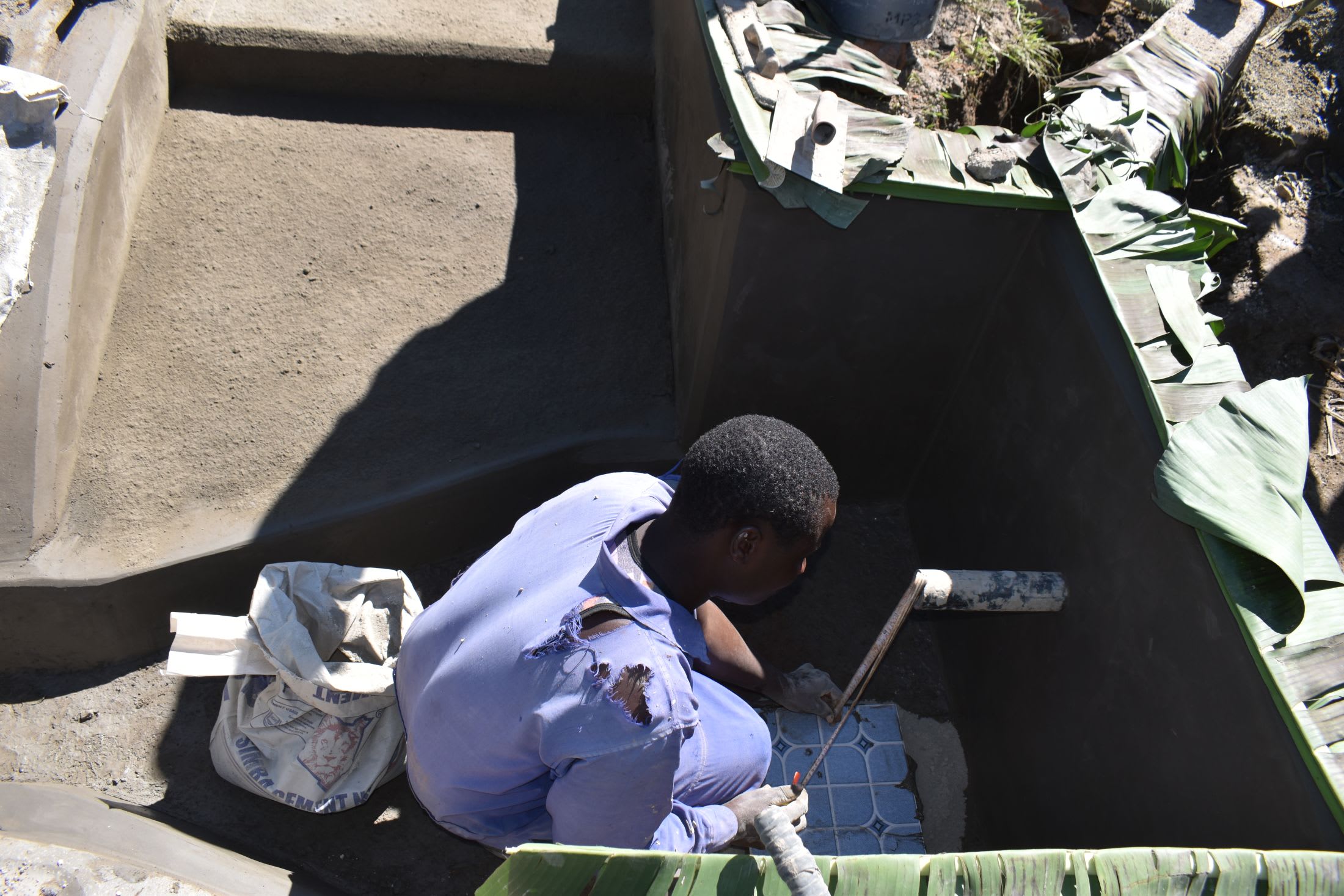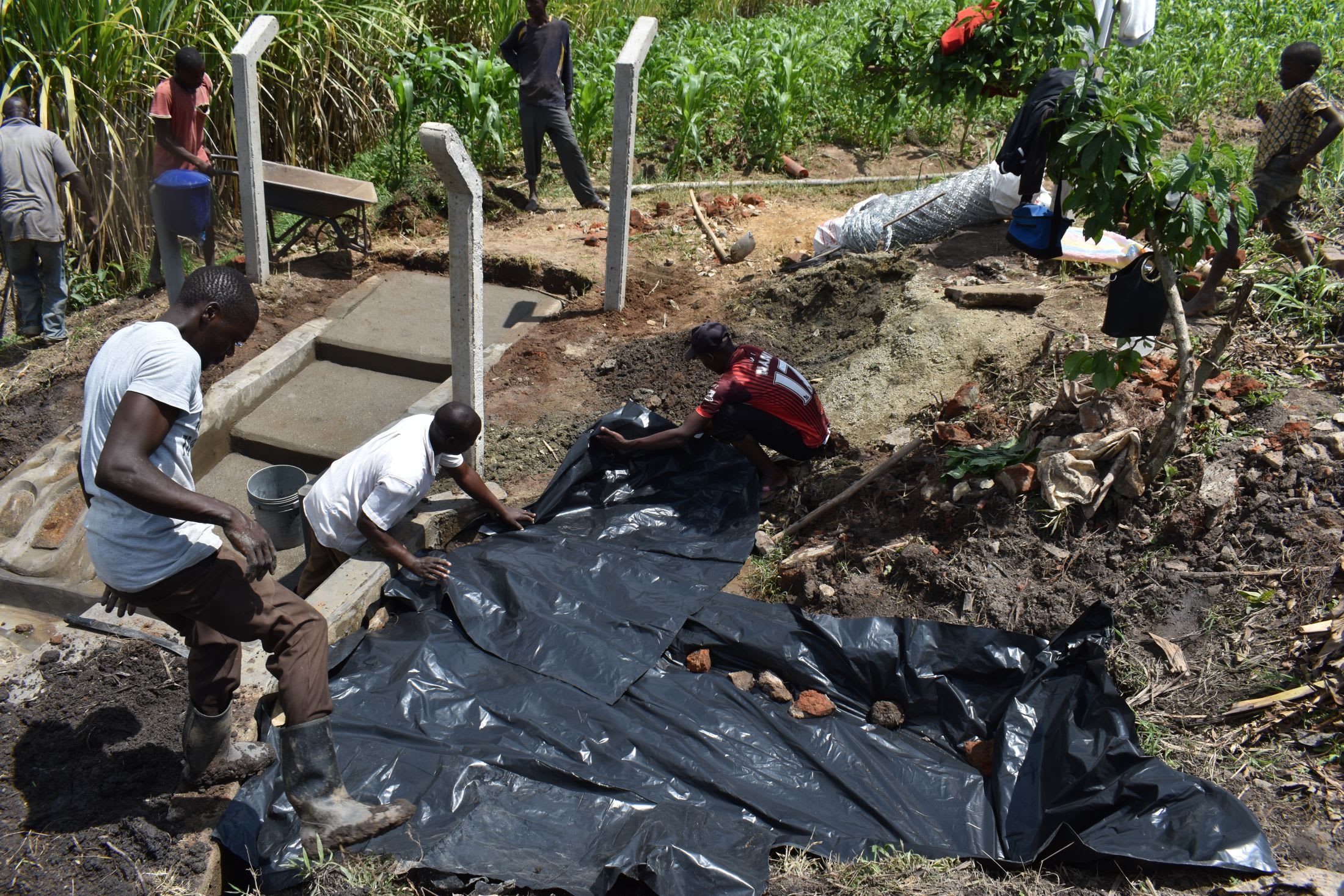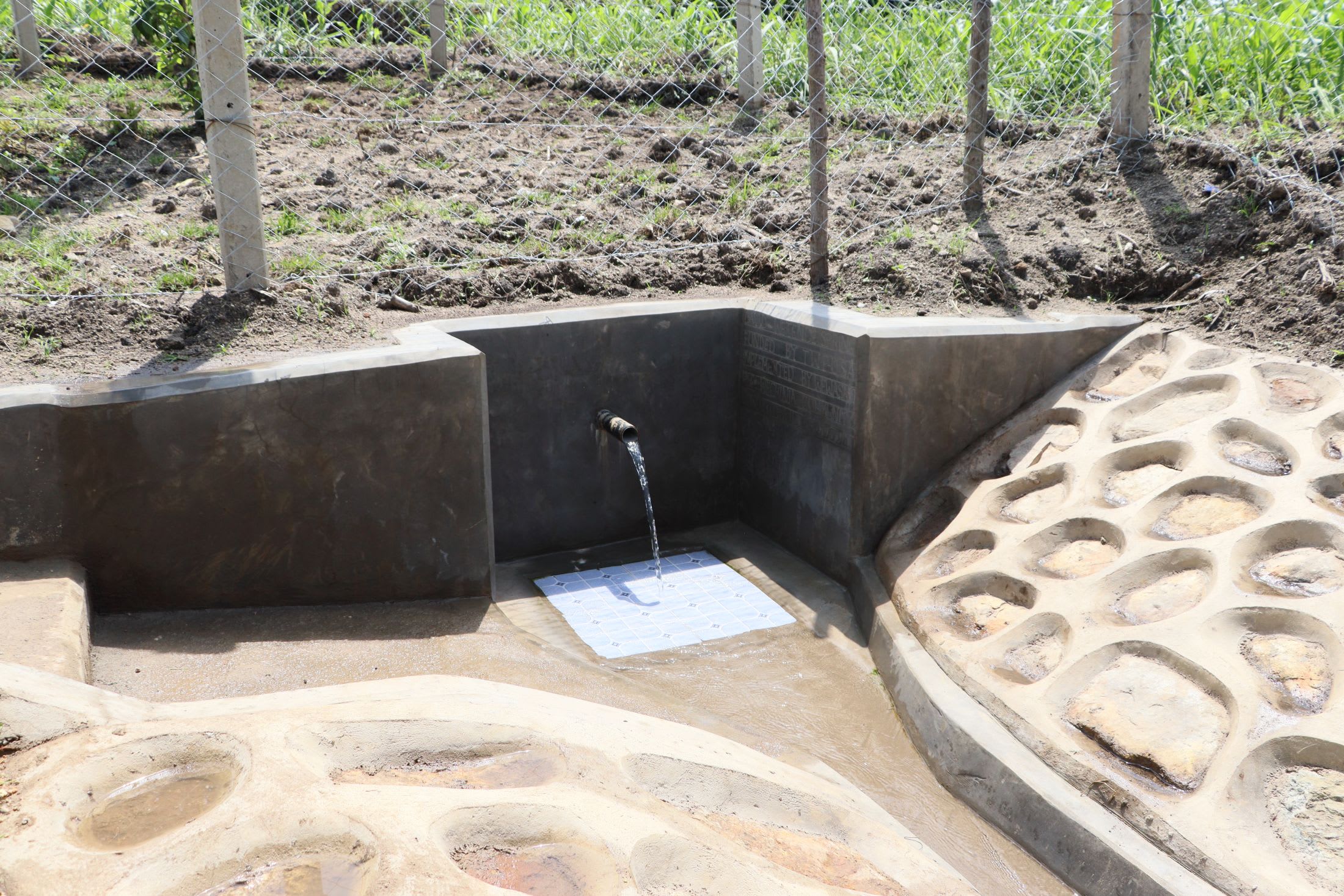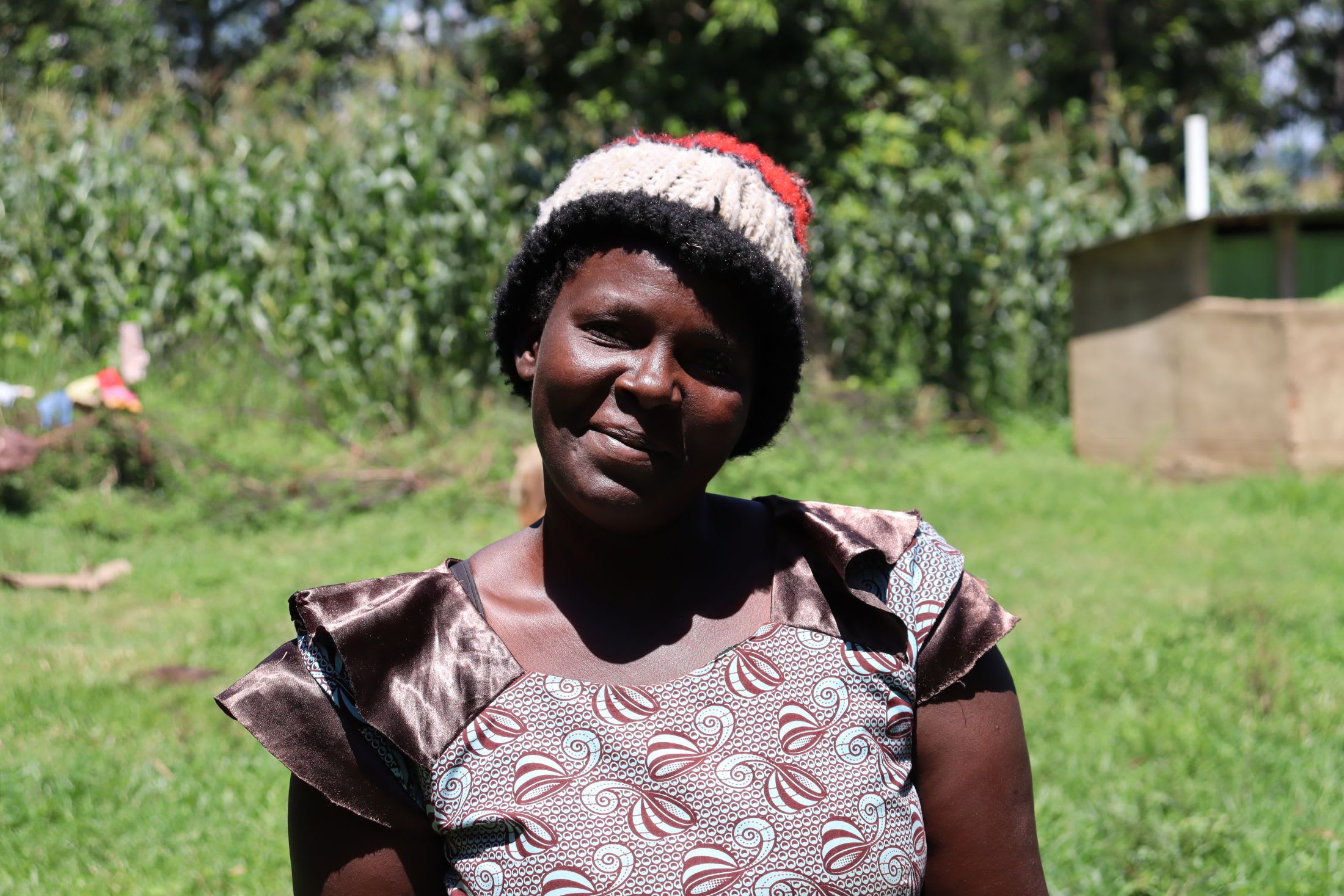The 105 people of Wechinia Community have struggled to access sufficient water for three long years. The protection of their spring was once attempted (seen below), but it was not sustainable and has since become run down, unsafe, and inefficient. It puts everyone's health and safety at risk.

Field Officer Stella Inganji said, "Most community members have reported that the common health issue arising from this water point has been stomach upset, leading to diarrhea and a few typhoid cases due to poor sanitation around the water point. Apart from health issues raised, the community members also complain [about the] slippery ground towards the water point area where it is becoming dangerous to old people and young ones."
This problem will only worsen as the spring becomes more and more inefficient. The community is growing, so long wait times are bound to increase as well. Below, you can see community members waiting their turn to collect water.
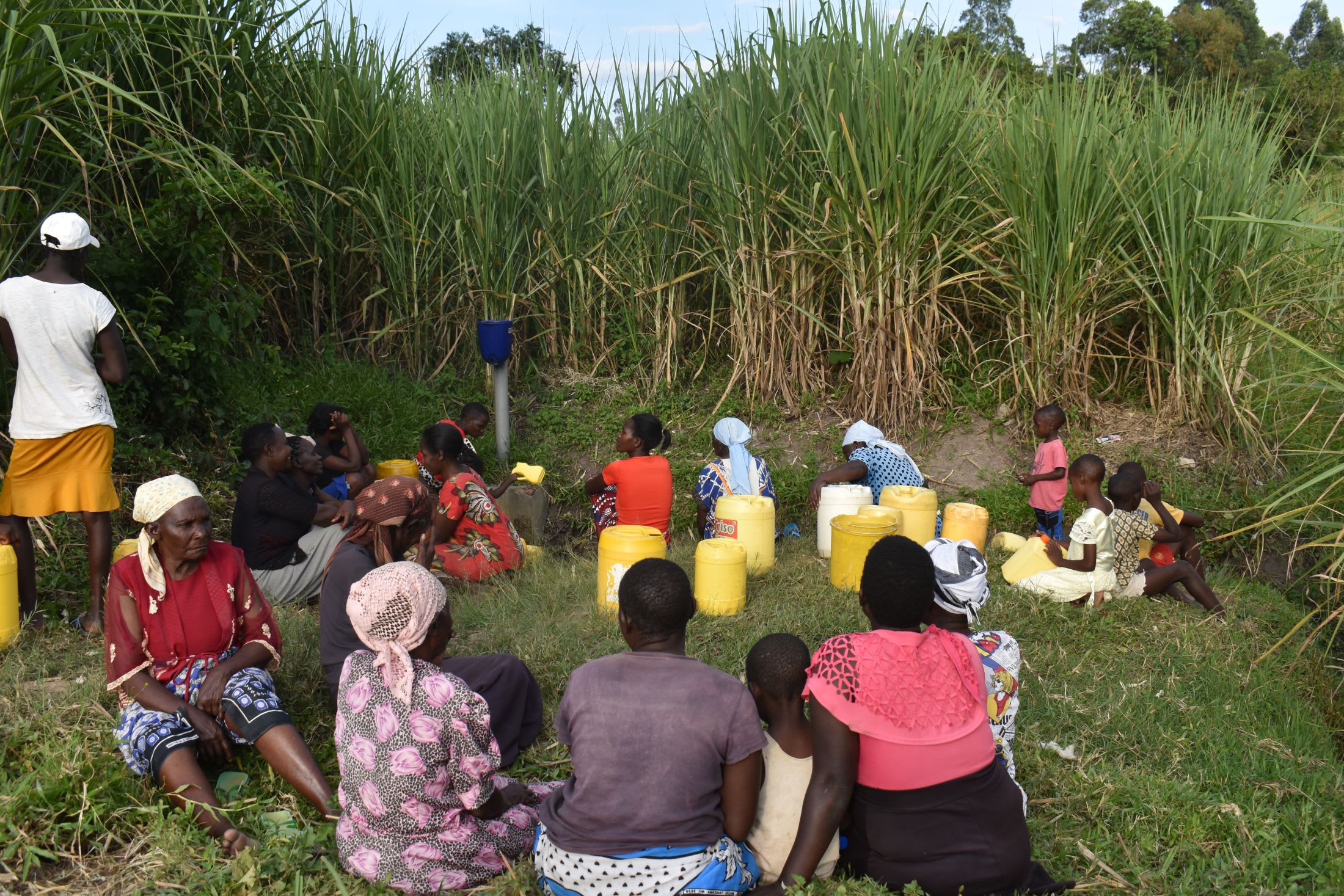
We asked 51-year-old Beatrice Munanga (seen below carrying her jerrycan) how long her typical wait time is to collect water. "It was more like one hour because I had several jerrycans to fill, and by the time I was leaving the water point, one hour had long elapsed. This was last year during [the] dry season when several water points had dried up, and there was also a function at the nearby church which uses the same water point, so the water point was congested, making people wait for long, and it happened I was among them."

When community members are forced to wait in long lines, it steals from other crucial activities. They don't delay in a long line just once a day but often as many as six times. For farmers like Beatrice, every moment not spent tending their fields is income stolen from their families.
15-year-old Dalmus (below in the yellow shirt) is familiar with this problem. When he has to wait, he loses time that should be spent at school. He misses even more valuable learning time when the water he consumes makes him ill.

He shared, "There was this one time I was very thirsty, and I was waiting at the water point for my turn to fetch water. I drank the water directly from the source without treating, and, of course, the waterpoint sanitary [condition] has always been poor, so I immediately started having stomach upset, which led to diarrhea for two days. My parents had to spend [money on] my medication with money that was meant for other expenses. I felt very bad. They took me to the hospital and made sure [I] received proper medication even if it cost them some money that was meant for other uses."
Field Officer Stella continued, "The spring is a partially protected spring with some water diverted coming from the stone pitching area, making discharge slightly reduced, hence leading to overcrowding at the water point. By reconstructing the water point, we will be able to capture all the water channels around, cover the sources, and fence the spring box where the community members will now have good access to clean, safe, and reliable water. Secondly, there will be no time wasted at the water point due to congestion because after capturing all water channels, the water discharge will increase; hence, less time will be spent."
Protecting the spring will enable people like Beatrice to invigorate their farms, enhancing their livelihoods and thus improving their family's living situation.
"If we have good access [to] safe and reliable water, it is important for our health whether used for drinking or domestic use. Also, with [the] availability of water, proper sanitation will be observed, and food production will increase, hence reduc[ing] poverty in our community," concluded Beatrice (seen below).

With access to clean water, children like Dalmus can focus on their education and make the dream of achieving their goals a reality.

"I would like to study hard so that I become successful in life and give back to society by piping water to far homesteads that have no water around so that community members can be comfortable and [be] fearless," Dalmus shared.
The Proposed Solution, Determined Together...
At The Water Project, everyone has a part in conversations and solutions. We operate in transparency, believing it benefits everyone. We expect reliability from one another as well as our water solutions. Everyone involved makes this possible through hard work and dedication.
In a joint discovery process, community members determine their most advantageous water solution alongside our technical experts. Read more specifics about this solution on the What We're Building tab of this project page. Then, community members lend their support by collecting needed construction materials (sometimes for months ahead of time!), providing labor alongside our artisans, sheltering and feeding the builders, and supplying additional resources.
Chlorine Dispensers
Installing chlorine dispensers is an important piece of our spring protection projects. This spring already has a dispenser, but we will ensure it is functional and, if not, make the necessary repairs or replace it. We will also touch on the importance of using the chlorine dispenser during our training with the community. Protecting a spring provides community members with an improved water source, but it doesn’t prevent contamination once the water is collected and stored. For example, if the water is clean and the container is dirty, the water will become contaminated.
We ensure that each chlorine dispenser is filled with diluted chlorine on a consistent schedule so that people can add pre-measured drops to each container of water they collect. That way, community members can feel even more confident in the quality of their water.
Water Access for Everyone
This water project is one piece in a large puzzle. In Kenya, Sierra Leone, and Uganda, we're working toward complete coverage of reliable, maintained water sources that guarantee public access now and in the future within a 30-minute round trip for each community, household, school, and health center. One day, we hope to report that this has been achieved!
Training on Health, Hygiene & More
With the community's input, we've identified topics where training will increase positive health outcomes at personal, household, and community levels. We'll coordinate with them to find the best training date. Some examples of what we train communities on are:
- Improved hygiene, health, and sanitation habits
- Safe water handling, storage & treatment
- Disease prevention and proper handwashing
- Income-generation
- Community leadership, governance, & election of a water committee
- Operation and maintenance of the water point
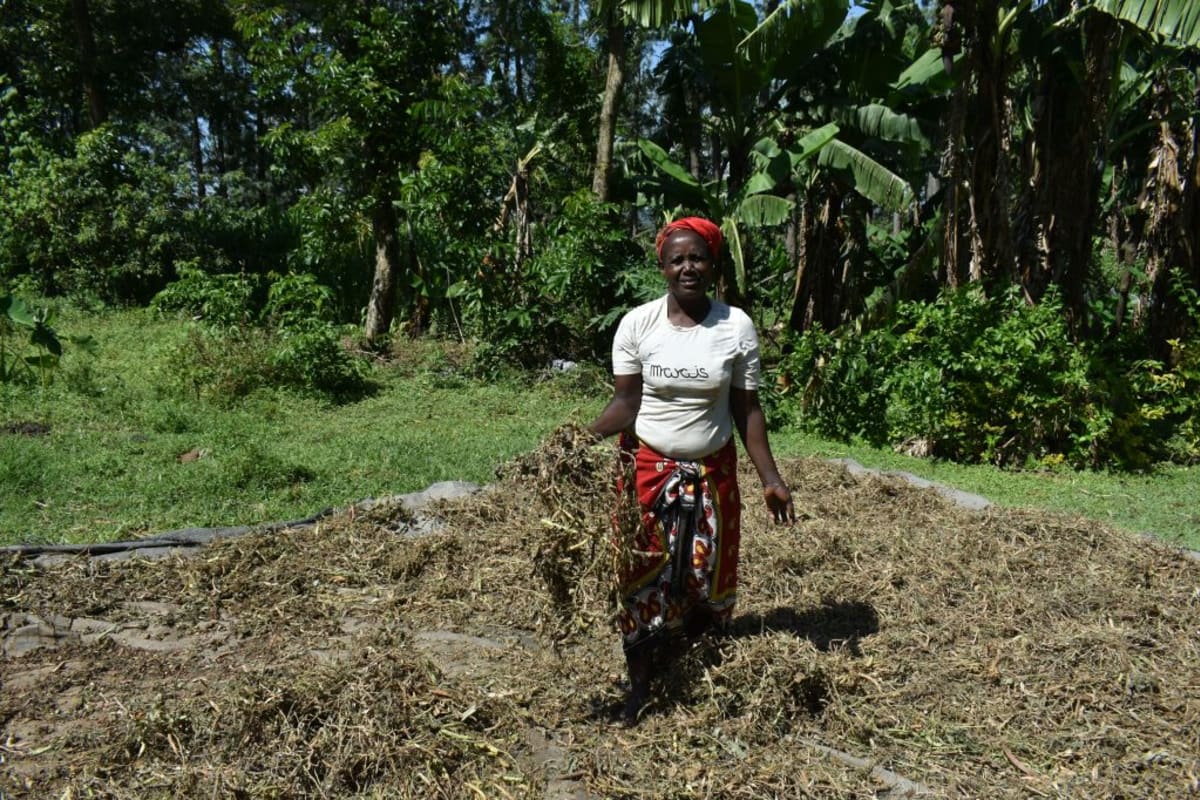
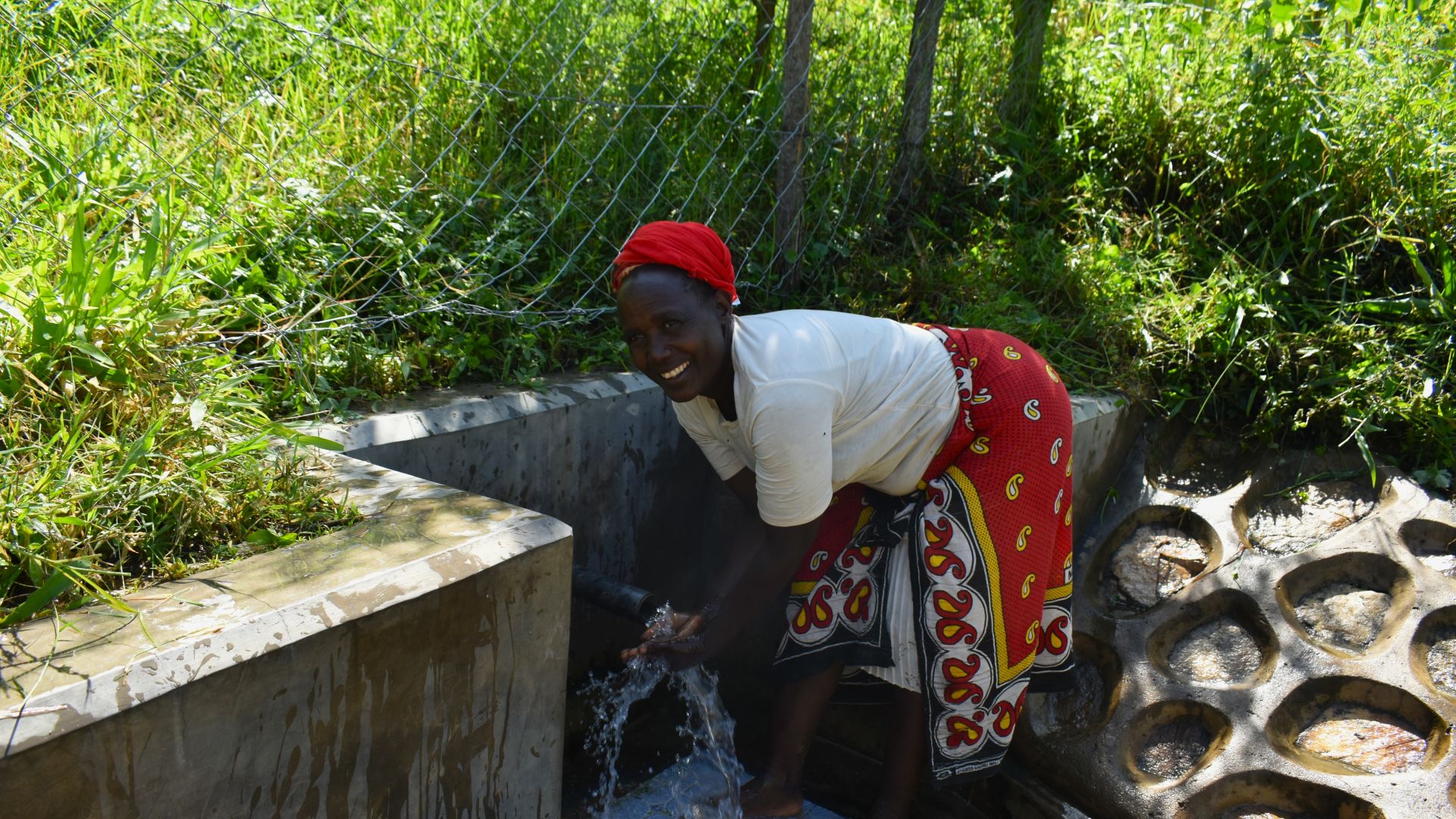

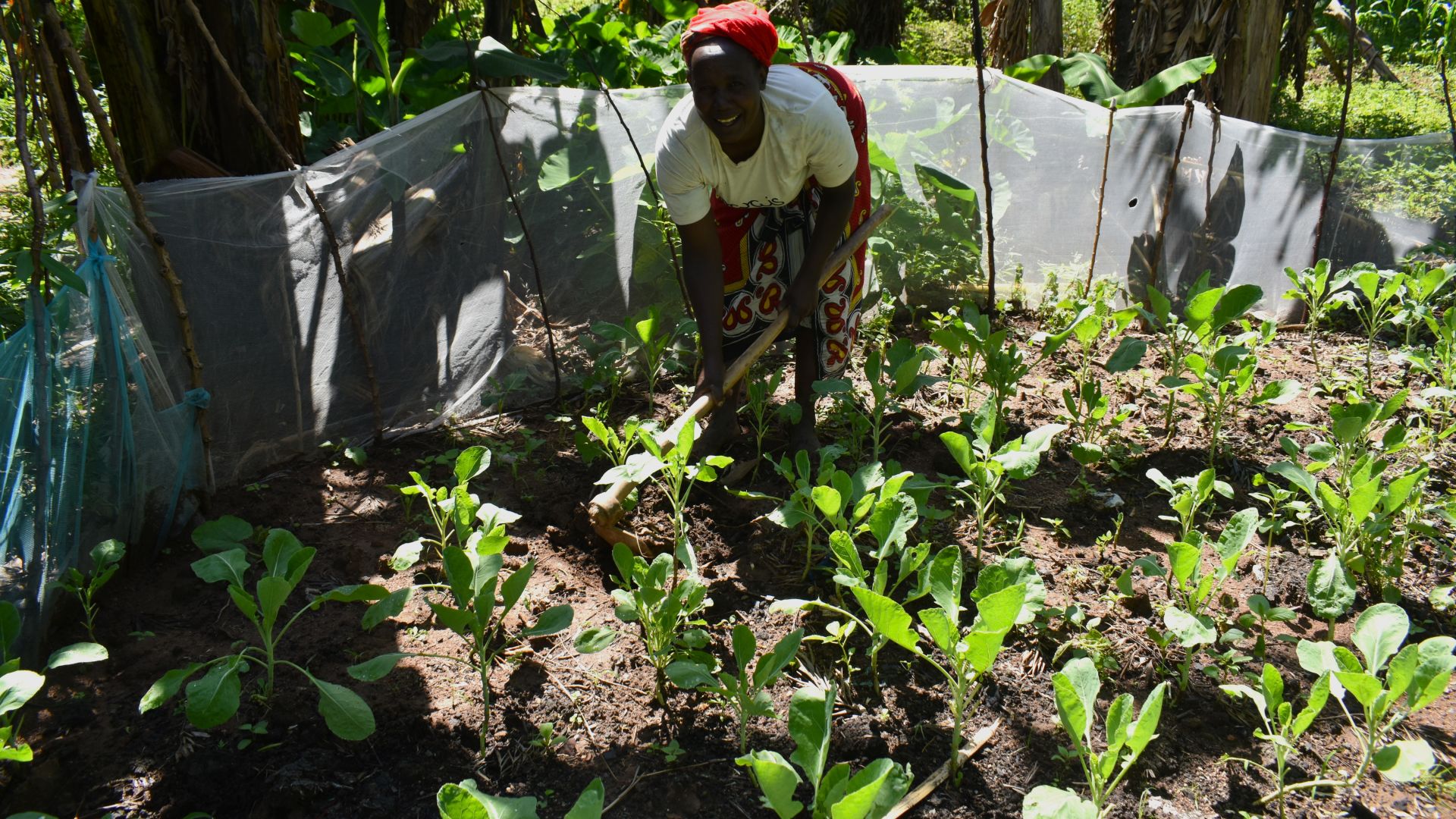

 Protected Spring
Protected Spring
 Rehabilitation Project
Rehabilitation Project










